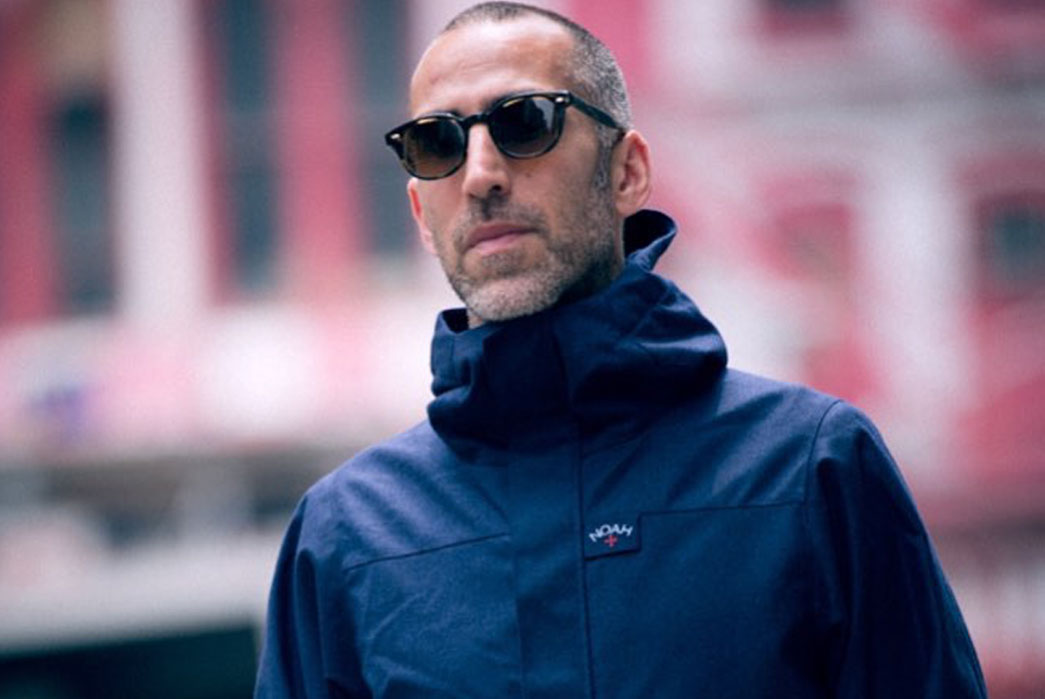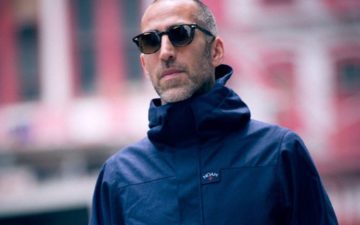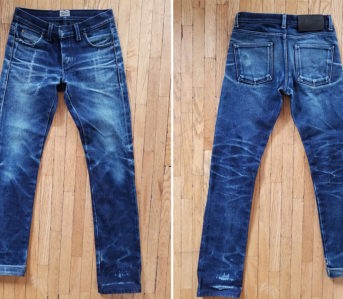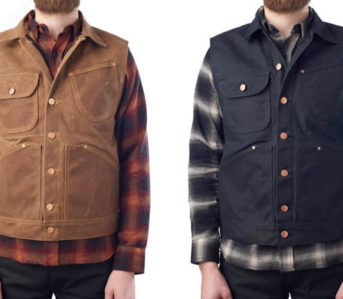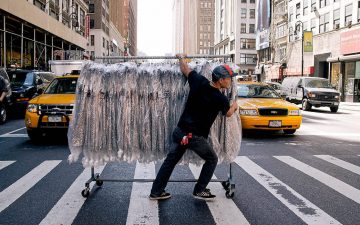Beneath the Surface is a monthly column by Robert Lim that examines the cultural side of heritage fashions.
Just to let you in on a secret – many of the pieces I write here are the simple result of me trying to answer a question. The question I may have learned the most from was, “How can a pair of jeans cost $20?” It led me to understand the living conditions of the overseas workers who make such jeans, the environmental consequences of working on the scale necessary to produce such a cheap commodity, and how the flood of discarded garments ultimately undermines the economies of the same poor countries whose population is exploited to create them in the first place. You can read the two pieces it inspired here. I’m grateful for the response they received, and I wanted to take the next step by focusing on the different ways that brands that are conscious of these issues try to do things the right way.
I’ve followed the brand Noah since their recent relaunch, and a few of their blog postings caught my eye over the last couple of years. They’ve been talking about these same issues with increasing frequency and precision through the lens of their own products and practices. They highlight the nuances and challenges of trying to be a responsible brand – whether it’s through the use of fabric made with post-consumer waste, how to find the least wasteful form of packaging for online orders, or considering environmental impact.
Those posts made me want to talk to the brand about the mindset and challenges of responsibility in the fashion world, so I sat down with Noah’s founder, Brendon Babenzien, to learn more about his perspective and thoughts. We covered a lot of ground, so I’ve divided our chat into two installments with the first below.
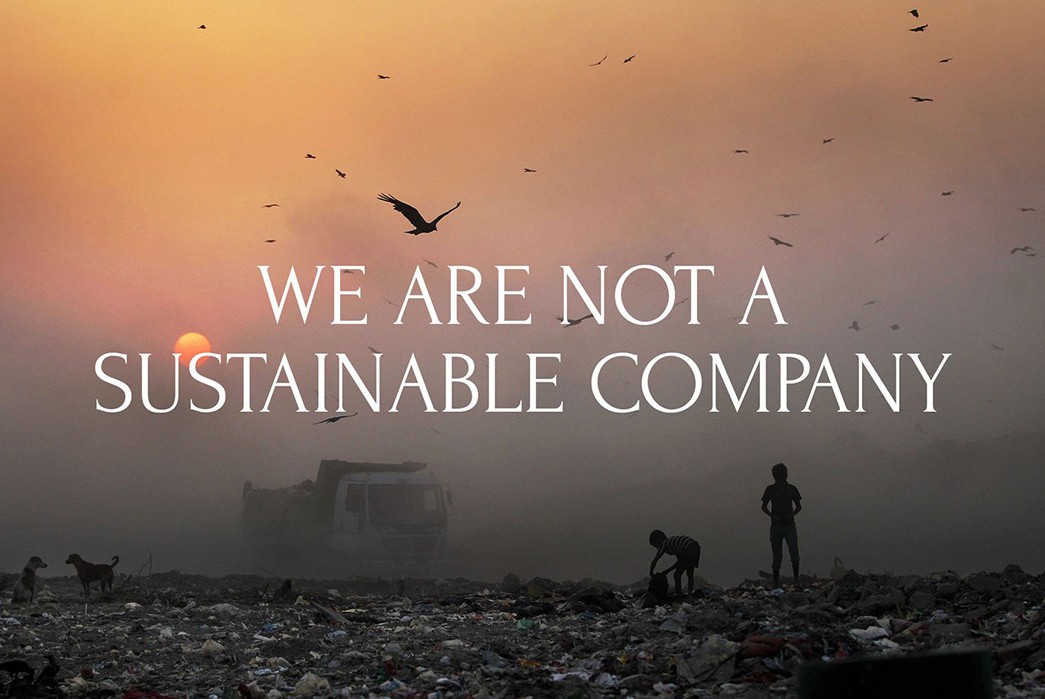
Fig. 2 – Noah’s position on its own sustainability. Image via Noah.
First off was a matter of terminology. It seems you can’t go anywhere without the word “sustainable” popping up – in fact, on the way to our chat, I walked by a window display triumphantly touting a pair of jeans as “our most sustainable jeans ever.” I’ve seen the word pop up so much that it’s become somewhat of a buzzword, and I know Babenzien has voiced similar concerns. So that’s how we started our chat.
Heddels (Robert Lim): I’m trying to think of a better word than running a brand in the “right way”. But it’s kind of loaded with buzzwords.
Brendon Babenzien: Just the fact that you’re mindful of the fact that there’s buzzwords in the first place means you’re ahead of the curve, because most people are just hearing these things for the first time and they love the buzzwords. They would actually would love to use the buzzwords, as opposed to avoid the buzzwords. And that’s when things get really scary, because it’s almost trend driven, to speak a certain way about things or act a certain way.
[Whereas] we’re trying to build a long-term thing here… [but] it is really complex to be in business and not do damage. So you try and find a way to give back, or do the least possible damage, or a combination of the two… to try and fix the problems long-term.
So our solution is to educate people about quality and teach them that fashion, in and of itself, is the worst thing for the world – because it drives you to consume, consume, consume and change, and change, and change who you are seasonally. “Well that was cool, now this is cool. Oh you used to wear that? Well can’t wear that anymore, now you have to wear this.” And we’re a little more staid, we’re a little more like – we’re into what we’re into, and that’s who we are, and that’s what we do, and that’s what we’ll always do. And we encourage people to just buy less. The only way you can do that as a business is to not be greedy. We don’t have to be a $100 million or $200 million company – we don’t have to be that big. That’s usually the goal for businesses – they start and they want to be as big as possible.
But in making that choice, you have to make other choices – and the other choices you have to make are usually pretty negative. So we very simply say: we’ll grow to the point where if we have to make bad choices that we don’t believe in, we stop growing – that’s the ceiling. Once you have to change the way you operate, change the way you think, change the way you behave, then you shouldn’t get any bigger than that. That’s how I look at it.
H: So what you’re talking about is wanting to be responsible in how you grow as a brand as well?
BB: It’s dangerous, right? Because we talk about it and then people call us out on things all the time. Well look, we call ourselves out. We know we’re not perfect. We know we have a long way to go. When you’re small, you can’t make change overnight. You have to evolve slowly and figure out ways to be better. But having the fundamental idea of being a better business in the first place, to us, is important.
We know we’re going to fail in a lot of ways, and we’ll fix one thing at a time as we go forward, as we can. And the bigger we get, the more opportunity we have to fix the problems. Which is interesting, because when you’re small, you can’t do anything. No one wants to talk to you – you can’t make things a certain way because “you’re not making enough, we don’t want to work with you”. Once you can do [say] 10,000 t-shirts, it’s like “OK, now we can talk.” Or you want to make a recycled cotton t-shirt? “Cool. Your quantities are big enough, we’ll talk to you.” When you’re small, you can’t do anything. It’s really hard, and it almost stops things from happening because businesses inevitably always start small. It’s like people with all the good ideas don’t have the resources to execute those ideas often.
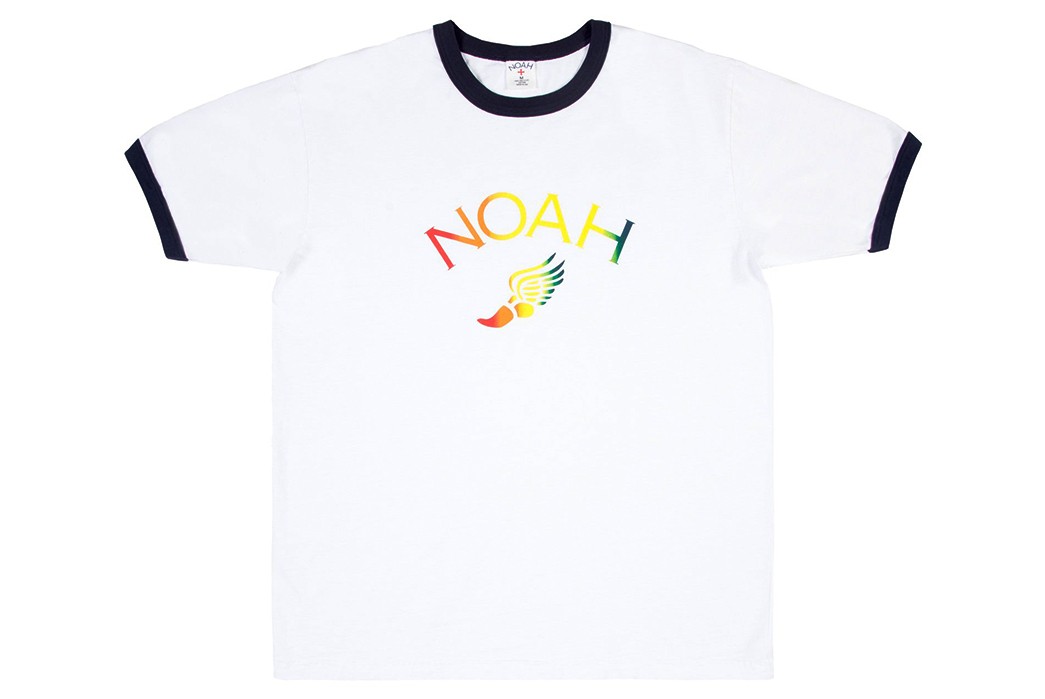
Fig. 3 – Noah Winged Foot Ringer t-shirt, made from 100% recycled cotton. Image via Noah.
And the guys who are making all the money don’t have any incentive to change because they’re making money the way they’re already making money now – and they don’t want to make less money. But they should want to make less money. The way I look at it is pretty simple. It’s like – OK, you’re walking down the street and there’s a little kid on the side of the street. Kick the kid in the stomach, right? You’re going to kick that kid in the stomach? Probably not.
But the way you do business is fucking kicking that kid in the stomach.
Maybe worse – maybe it’s like that kid’s peeling shrimp in some shrimp farm in Asia somewhere for no money, in a camp full of kids who are being abused physically, sexually, mentally, to get you fucking shrimp. Or, if you’re the president of Coca-Cola and, if that Coca-Cola is going to poison that person instantly, you’re not going to be allowed to make it. But it’s fine to poison that person over time. And give him diabetes and cancer and everything. It’s fucking bananas to me. It’s completely insane. But that’s the world we live in. But if you, as the president of Coca-Cola, had to shoot that kid in the head, you wouldn’t do it – but you’re happy to poison that kid over his lifetime, and he’ll probably die earlier because he’s a Coca-Cola fan. It’s nuts.
H: It is. And especially since a lot of the exploitation of labor happens overseas, we don’t really think about. It’s not covered that much, so…
BB: Yeah, it’s all hidden away. You know what I mean?
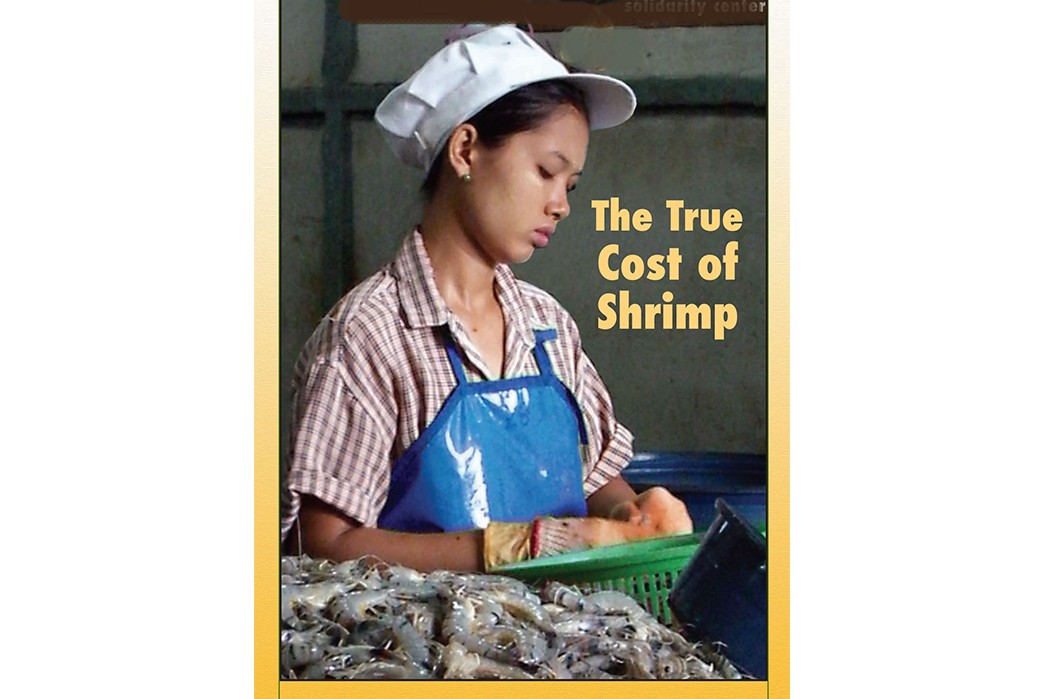
Fig. 4 – Cover of a 2008 report by the Solidarity Center, calling out labor practices at shrimp processing plants in Asia. Image via Shrimp News.
H: So you don’t want to be the biggest company in the world and be forced into making decisions that you don’t think are OK.
BB: Right.
H: Is that a conversation you had with your investors?
BB: Absolutely, yeah. My investors – and there’s three of them, and they’re all pretty minority – they really don’t hold a big stake in my company at all. We didn’t need a lot to start, we were very resourceful and efficient. But the ones that did invest, it was made very clear to them on what our intention was. And that’s more or less the reason they got involved. They were more excited about that stuff than anything else. They were excited to hear that there were people starting businesses who want to try and do the right thing, and try and make change both internally in the industry and externally in society, through the things we talk about and the way we operate – make a t-shirt and donate the money over here, bring attention to this subject, communicate to our customers about their behavior as consumers and how their choices literally mean something. It’s not a foreign idea – it’s real. How you spend your money makes a difference. It means a lot to how the world is run.
So that’s the stuff that our investors are psyched about. And to be fair, they all had money already so they weren’t in it for the money. They already made money, and now that they have money, they’re like “OK – what can we do, to help drive change?”
H: Can we agree on a word to talk about what it is? Sustainability? Responsibility?
BB: I think responsibility is a better word, because it’s both in the way we produce our clothing, and also in the way we behave. Not just with our customers, but as individuals. There’s no separation between the business, brand, whatever you want to call it – and our personal lives. They’re one and the same. A lot of people go to work and their work is their work and they can go home and have a totally different point of view on things. This is not that.
Our life is our business and our business is our life.
It’s like, when you’re a kid – you’re into what you’re into and it’s your whole world. This is the same thing. What you see from us is our reality. We talk about what we love and what we’re into – whether it be skateboarding, or the ocean, or music, or whatever. It’s all very, very real. It’s kind of like a teenage dream to be doing this, more or less. This is like – if my six year old self [could imagine being an adult], this would be it – you know?
H: So, following the course of the brand and looking at your blog… I recall pretty early on you talked about integrity a lot. There wasn’t a whole lot of focus on what we refer to as responsibility. Was that there from the beginning, even though you weren’t talking about it as much? Or was there kind of something that happened along the way?
BB: No, the responsibility thing has always been there. I think what maybe wasn’t there is a sophistication on how to relay the message to our customers.
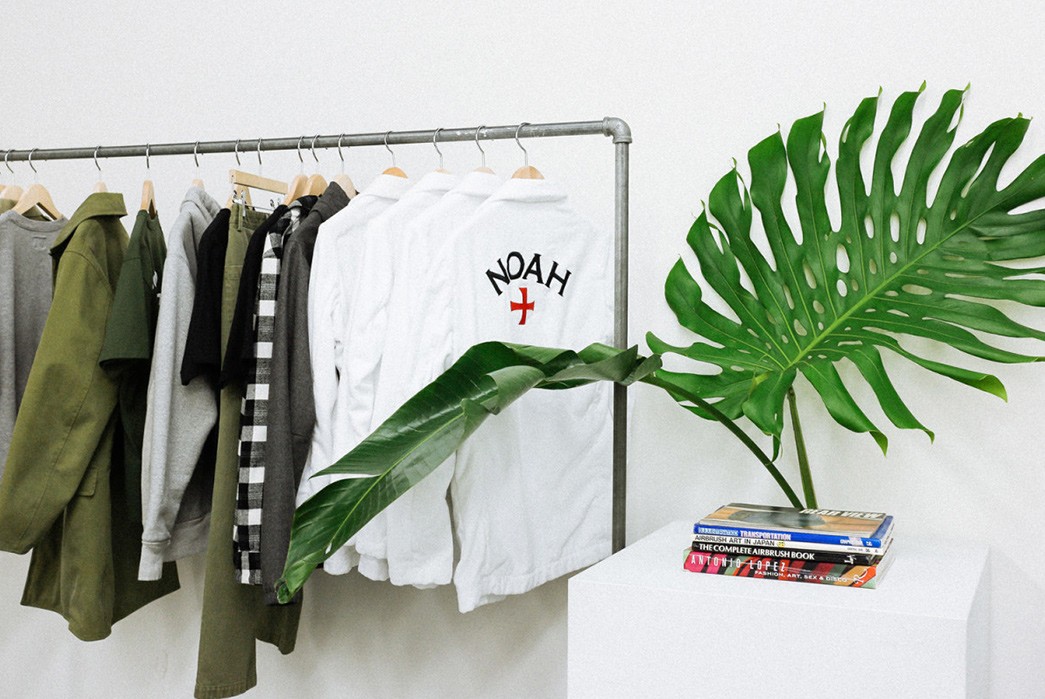
Fig. 5 – Early days: inside the Noah pop-up store in 2015, which effectively relaunched the brand. Image via Highsnobiety.
When I started this, I was like, just DO IT! And how to get information across to people is something that we’re maybe getting a little bit better at as we grow. I have more people now who are helping me, more people who are a little more intelligent about how to relay ideas to the public because I’m super emotional about it – I just kind of spit it out there, and it doesn’t always make sense. But it was always there. I mean it’s been on my mind for like fifteen years. I’ve always thought that. For me, I believe that business runs the world – maybe more so than politics. Because when you think about the way politics works, politics is pretty much driven by business, right? Businesses have lobbyist groups, and they pay for peoples’ campaigns, and they pay people to say things and do things and pass laws. So really, business is driving politics. So you can’t really change who the politicians are because the politicians aren’t really listening to you – they’re listening to the people who pay them.
So if you want to make change, if you want the laws to change or if you want the system to change, you actually have to impact the business. And the only way to impact the business is… All business cares about is money. So the only way to get a business to change its behavior is by hurting it financially, or helping it financially. We’ve just seen that with Dick’s Sporting Goods – they said, “we’re not going to sell these weapons anymore. We’re going to raise the legal age to buy them from us to twenty-one.” And of course there was a backlash that was fairly negative, but there was more of a positive. Right? People went and shopped with Dick’s that had never shopped with Dick’s before, to show them support. So that’s kind of a new thing that’s happening. Business is how you’re going to make change, and business is driving lawmaking . So we have to affect business to effect real change globally.
You know… businesses have enough money to support people comfortably. Everyone should be able to eat, everybody should be able to get clean water. There’s enough wealth in the world to do that. But the fundamental business structure that’s been in place is the business itself should do as well as it can, regardless of the outside world, and we should just keep driving our profits and keep making money. We don’t care what’s happening outside of the business – the business comes first and we’ve revered that, we’ve revered people who have become incredibly rich through industry, right? They’ve been superstars to us, rich people – we love them, right? That’s a mistake. It’s a disaster, because these guys are making tons of money over here and then there’s people starving down the street.
That’s way out of line – like, it just doesn’t make sense.
H: I think the system is kind of set up that way. Because if you’re the board of directors of a big company, and your executive team is not taking advantage of every opportunity to make money, then you can basically tell them that they’re not fulfilling their fiduciary responsibility.
BB: Right. Which is nuts, that that’s our system. It just lacks humanity.
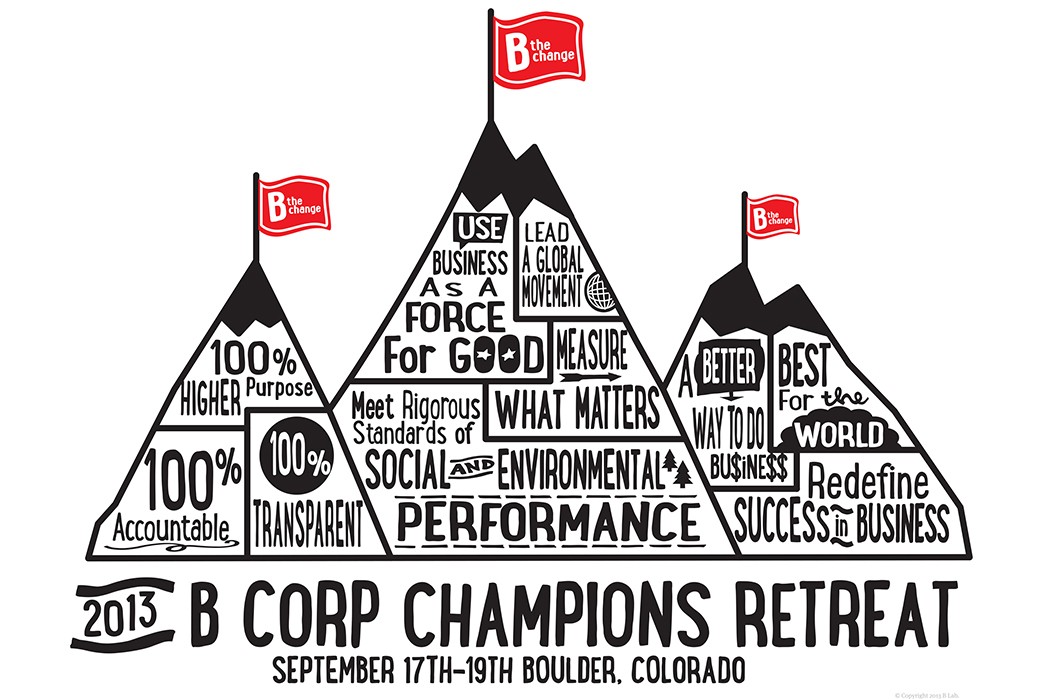
Fig. 6 – A thumbnail view of the B Corp. Image via B Labs.
H: It does. So one thing that I’ve seen that addresses that is the B-Corp – the B-Labs initiative. What are your thoughts on that?
BB: We talk about that stuff all the time. Our version of responsible behavior is the best that we can offer right now. Will it meet the needs of a B-corp? I don’t even know, because we haven’t tried to become certified. I don’t really know if it’s important or not. I think what’s more important is – what are you doing? And this goes back to my little idea fifteen years ago – it was, every business should take at least one thing under their wing and say – “this is the positive thing we’re going to do,” whatever that is.
It could be, they’re going to help girls in India go to school; or they’re going to help clean up the ocean. If every single business – from the pizzeria down the street to the big massive corporations – all decided to do one little thing, the world would look very, very different because pretty much everyone’s in business in some form. Right? Everybody works for a company, everybody works somewhere. So if every one of those businesses took on some small thing, things would be pretty interesting – but not all businesses do that. A lot of businesses just make money for the owners or the investors or whatever, you know? And that’s where it ends. I think that’s changing. I think we have people doing a lot of good with their wealth. But not everyone is, you know? If everyone had to, if every business had to do something, it would be incredible what would be possible.
H: I think you’re right. So you mentioned something fifteen years ago – was there something specifically, like an a-ha moment?
BB: No, I think it was always kind of bubbling underneath from when I was a teenager. Because I worked in a surf shop and there was always a lot of talk about responsible behavior – mostly because we were surfers and we talked about the ocean. Keeping the ocean clean and that kind of thing. There was one incident when I was young, I was probably fifteen or sixteen when my boss at the time, who ran the shop, was talking to me about the surf industry in general – Quiksilver, Billabong, these big companies who in the 80s were really cool and coming up.
And he showed me something that was really interesting, and I had never considered it – because obviously I was just a teenager and I was just kind of fucking around, I wasn’t paying attention to the world yet, you know? And he was like, look at these surf companies who claim to really care about the ocean and care about the environment – they’re supposed to be the stewards who are protecting the world. We get an order in and backorder, say, a size 32. And then a month later they ship one pair of shorts, packed in all these fucking styrofoam peanuts. We would get fifty boxes in one day. And sometimes it would be one t-shirt and he was complaining about it. It was the first time I heard anyone talk about it in that way – he was like, “that’s stupid. I’d rather they take that short, wait until they’re going to send me another big shipment of a whole bunch of stuff, put it in there and send it to me.” You think they ship this box all the way across the country, this big box full of styrofoam peanuts for one set of shorts that doesn’t really need to be packed in styrofoam peanuts because it’s a pair of shorts. It’s not like a glass. And they did that with everything.
And he started complaining, because he had a lot of influence and he knew the Meistrell brothers who owned Body Glove. And at the time, the president of Quiksilver… and I think he quietly somehow started influencing them. Eventually, the surf industry created a responsibility component where they all participated to be better, and do better. And I think, thinking about it now, he might have had something to do with that because he was pretty vocal with these guys.
But that was probably the seed that was planted that led eventually to me thinking this way. One of the seeds, anyway.
H: Going back to expressing all this on your blog. For me, the post that really caught my attention was The Anatomy of a Jacket where you go into the details of the costs with complete transparency. What’s the response been?
BB: Well that was huge. That was our most popular blog post ever. And it’s funny because that one, I was ranting and raving about how nobody really understands that when they buy a cheap garment, that in essence they’re voting for someone else to have a shitty life. They’re saying, “look this is OK. I want a 98 dollar jacket.” And that means somebody else has to make it for pennies, or dollars or whatever, and they don’t have a living wage, and they can’t send their kids to school. And they’re not getting good nutrition and everything else. They’re voting for that. They’re saying that’s OK. And I was going nuts about it.
But if you make a jacket and people are being paid properly and, all along the way everyone’s acting responsibly, you end up with a jacket that looks like it’s worth a hundred twenty-eight dollars based on what the consumer has become accustomed to, but actually should be six hundred dollars, you know what I mean? And that led Beau [Wollens], who’s a really good friend and who runs my company, to say – you need to talk about that, you need to put that in blog form. And that’s how that came up basically, which is often how some of our stuff comes up – we’ll be in the office, screaming and yelling about something like “What the fuck – this is ridiculous,” we’ll be like, that’s a blog post – let’s talk about that. That’s pretty much how most of them happen.
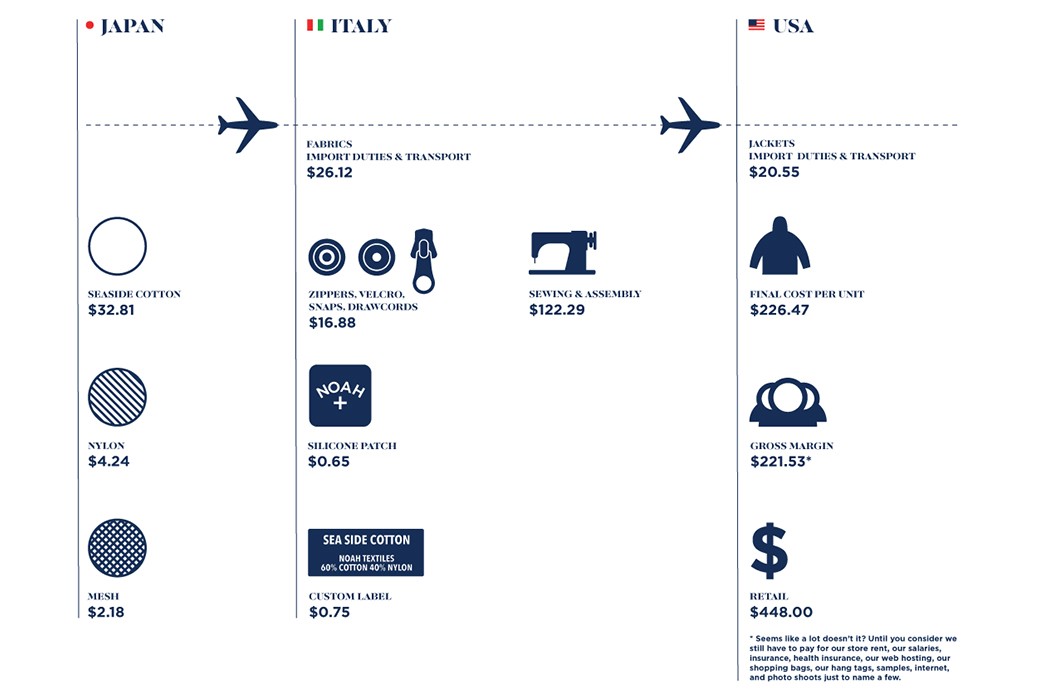
Fig. 7 – Cost breakdown of the Noah two-tone parka from their Anatomy of a Jacket blog post, via Noah.
H: Is that how the packaging one happened?
BB: The packaging one was interesting, because that was after a year of us trying to find a good solution to packaging, literally a year of ongoing conversations, people researching different packaging things for us and trying to find a good solution – and we just couldn’t find a reasonable solution.
So we just kept with this paper shredded thing, which is still to the best of my knowledge the best option we have. But it’s terrible for the customer because the shit gets everywhere when they open it, you know what I mean?
H: I understand what you’re saying. I’ve never had a problem with it.
BB: Some people don’t, but some people do. And that’s where it gets really interesting. It’s like, well – I talk to people that are close to me all the time about these things. We can complain all we want, but what are we willing to sacrifice to make the world better?
We all want it to be better. But are we really willing to sacrifice? So you opened it the wrong way and it got a little messy. Is that the worst thing that could happen? What’s better – the packaging not being wasteful, or you having to take out your Dustbuster for ten seconds? I’m not sure. But that’s how I think of things.
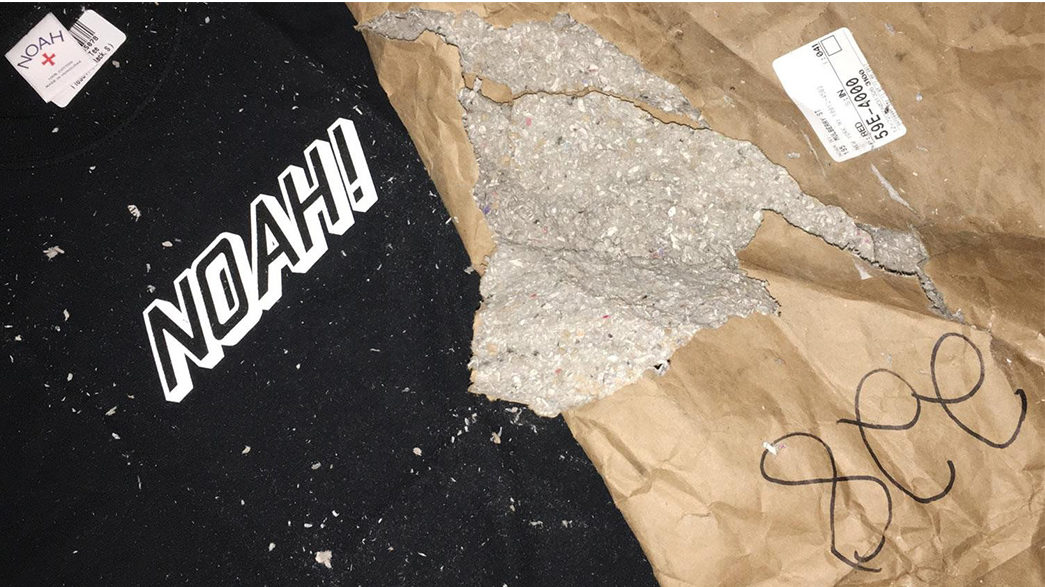
Fig. 8 – From Noah’s call for feedback on packaging, via Noah.
And I include myself, like there’s things that I have not given up that I should. I shouldn’t have a smartphone – phones are a disaster for human rights. I mean half the minerals and shit that go into a phone, the precious metals and stuff are mined by either indentured servants or slaves, for the most part. I haven’t given up my phone, or my computer, or my TV for that matter. It’s like electronics are all precious metals that are mined by people in Africa and places where they’re not treated well. But I still have a phone so, I include myself – it’s not sitting on some like high tower bullshit.
We are all part of the problem and we’re just trying to find solutions, you know? It’s a tough one because we don’t really preach – we just put the information out. And say, alright, now what? We’re not going to hold it against somebody if they make a different decision. We’re not going to be like, “you’re terrible,” because we understand how hard it is.
The world doesn’t change overnight. You know, you think about the corner store now, and being able to buy recycled [paper] toilet paper. There was like one store in every fifth town that had recycled paper towels. You had to drive to a special store that was the health food store, right? And that’s where you would get that stuff and now it’s everywhere. Wal-Mart, Kmart… people are participating in that culture. But that takes time, and I’d say more importantly than what we’re doing physically today, is probably the impact we’ll have over time because we have customers who come in who are young – teenagers, early twenties, whatever. And they’re telling us that they appreciate what we’re doing, and in some cases they’re trying to build their own businesses or figure out their futures, and some of what we’ve said is having an impact on them. So what are they going to do with the information as they try to go forward, as they build things in the future? I think that’s really way more important than even making a recycled cotton tee or something, you know what I mean?
It’s the people we might touch or communicate with, or have an impact on – what they might do in the future with it, more than anything. Because this is a vehicle for information as much as it is a clothing brand. You know, we get that from Patagonia. Patagonia’s pioneered that for everyone. They’re incredible – it’s a really interesting business that they’re in. And we have it a little bit tougher, primarily because we’re not preaching to the choir. They have an outdoor customer who already cares, and generally has some information already. [Whereas] we’re sometimes telling people something they’re hearing for the first time. I’ve been reading Yvon [Chouinard]’s books and following his brand forever since I was a kid. He’s had a major influence on me. I love what they do.
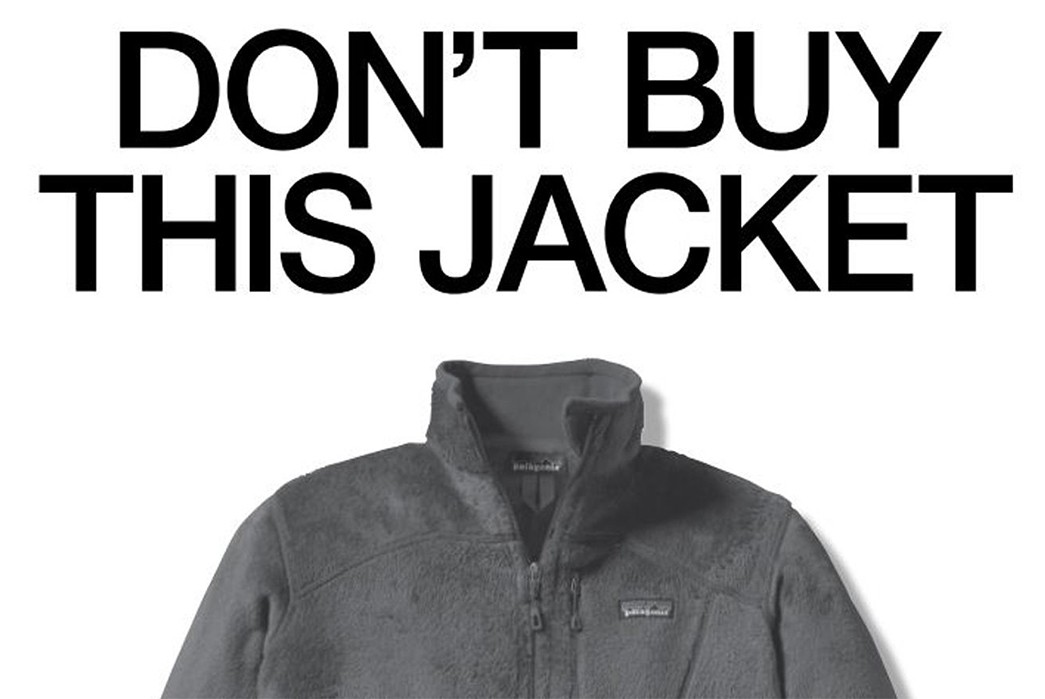
Fig. 9 – Detail from Patagonia’s famous ad in the Black Friday issue of the New York Times in 2011 via Patagonia.
H: Was there a moment that you really got what Patagonia was about?
BB: There must have been – I couldn’t remember it at this point because there’s so many moments – like, “oh that’s incredible.” I’ve been wearing their stuff for 30 years or something. So it’s been an ongoing kind of like a love affair with what they do.
H: Did you read the New Yorker interview with Yvon Chouinard?
BB: I didn’t, no.
H: He talks about this challenge that he had. Where he basically identified – or PETA, I think, identified – that one of his suppliers was not doing things in the way that he’d like:
“The following year, Patagonia, also a founder of the Fair Labor Association, discovered, further down its supply chain, that many of its textile mills, principally in Taiwan, engaged in human trafficking. Even though Patagonia was one of the smaller customers, it led a movement, in conjunction with other clients, N.G.O.s, and governments, to reform them. ‘No other brand was monitoring its mills,’ Doug Freeman, the chief operating officer, said. He estimated that the company’s attention to manufacturing its goods responsibly adds twenty to thirty per cent to the cost of production.”
…which is like, crazy.
BB: Just the human power to keep track of what they’re doing? Wow.
H: Yeah exactly. Because I assume that has to be on-site visits – having people go in and inspect.
BB: And even then, they know you’re coming. It’s pretty easy to change the way things look and feel when someone’s visiting.
H: So it kind of reminds me of being punk or straight edge, because there’s always going to be somebody who is more hardcore than you are. But especially [with] you running a business, how do you grapple with that kind of conundrum?
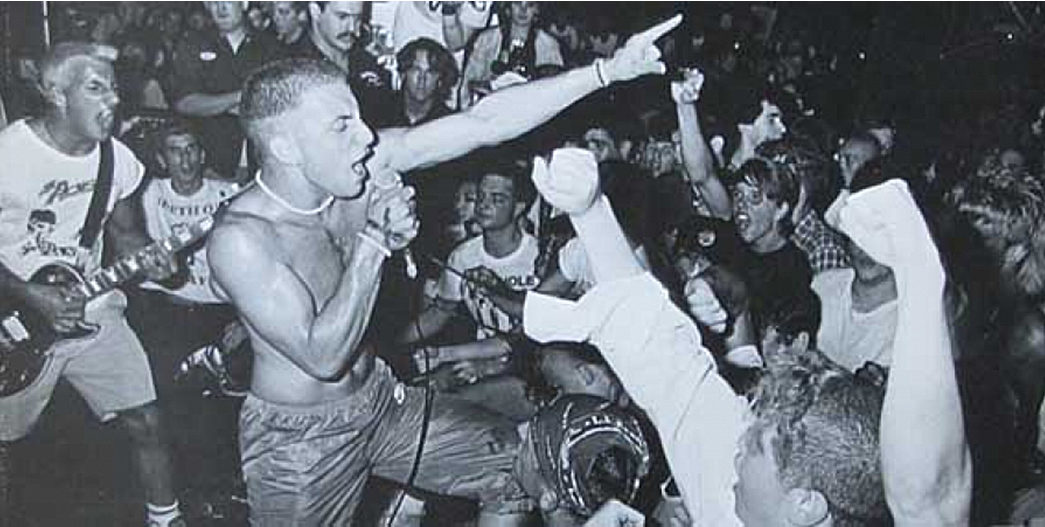
Fig. 10 – The Youth of Today, a prominent Straight Edge band via the Hellfire Booking Agency.
BB: I kind of don’t, honestly. I mean – I guess I’m old enough – where, at 46 years old, I know that there’s no perfect solution. Like that punk / straight edge reference – that’s a teenage perfectionist kind of attitude where you don’t quite – you haven’t been dealt quite enough reality checks yet. Like, you think that perfection is possible. Right? As you get older, you realize that half of life is flexibility and compromise and understanding how to navigate things.
So I don’t really deal with it so much – people can say whatever they want to say about me… I can only do the best I can do, and I’m not going to be bothered if our best isn’t good enough for one, or three, or twenty, or a thousand people out there. This is the best I can do. And I’ve engaged with customers of ours who’ve critiqued us – I’ll answer the e-mails personally and say “Yo dude, you’re wrong and this is why.” I’ll go into a whole educational process when people critique something we’ve done or the choices made, I’ll just try and bring them up to speed on it.
But at the end of the day it’s like, if you can do better, then do better – I’m all for it. We’ve asked people to show us better solutions to problems we have, and they rarely can. Because we do the research, we do the homework. We are looking into things and we are trying really hard to do the right thing.
So I don’t engage all that much in it, you know? Like I said, I’ll do the occasional e-mail to a customer, but I don’t really worry about it that much. You’d kill yourself if you did, you know? Because we’re really small fish in a really big-ass pond essentially controlled by people with a lot more resources than us. So we have to kind of be like quiet and sneak in. Eventually we might show up with a big stick, but we have to wait till we have that big stick, you know?
H: Yeah. So there’s always going to be these voices out there. Look at Patagonia, right? People probably scrutinize them more than anybody else and they do as much as you would think is possible…
BB: As much as possible. They do as much as a business can do. They do the best they can.
H: Do you think sometimes the feedback you get can be helpful though?
BB: Sometimes it’s very helpful. There’s no question. There’s people out there sometimes who know more than us and we love to hear from them. That’s important to us.
Our discussion with Brendon Babenzien will continue with how Noah learns about, and uses, post-consumer clothing waste to make new products, what’s happened to the American Dream, and what gives Babenzien hope for the future.
You can learn more about Noah on their website.

